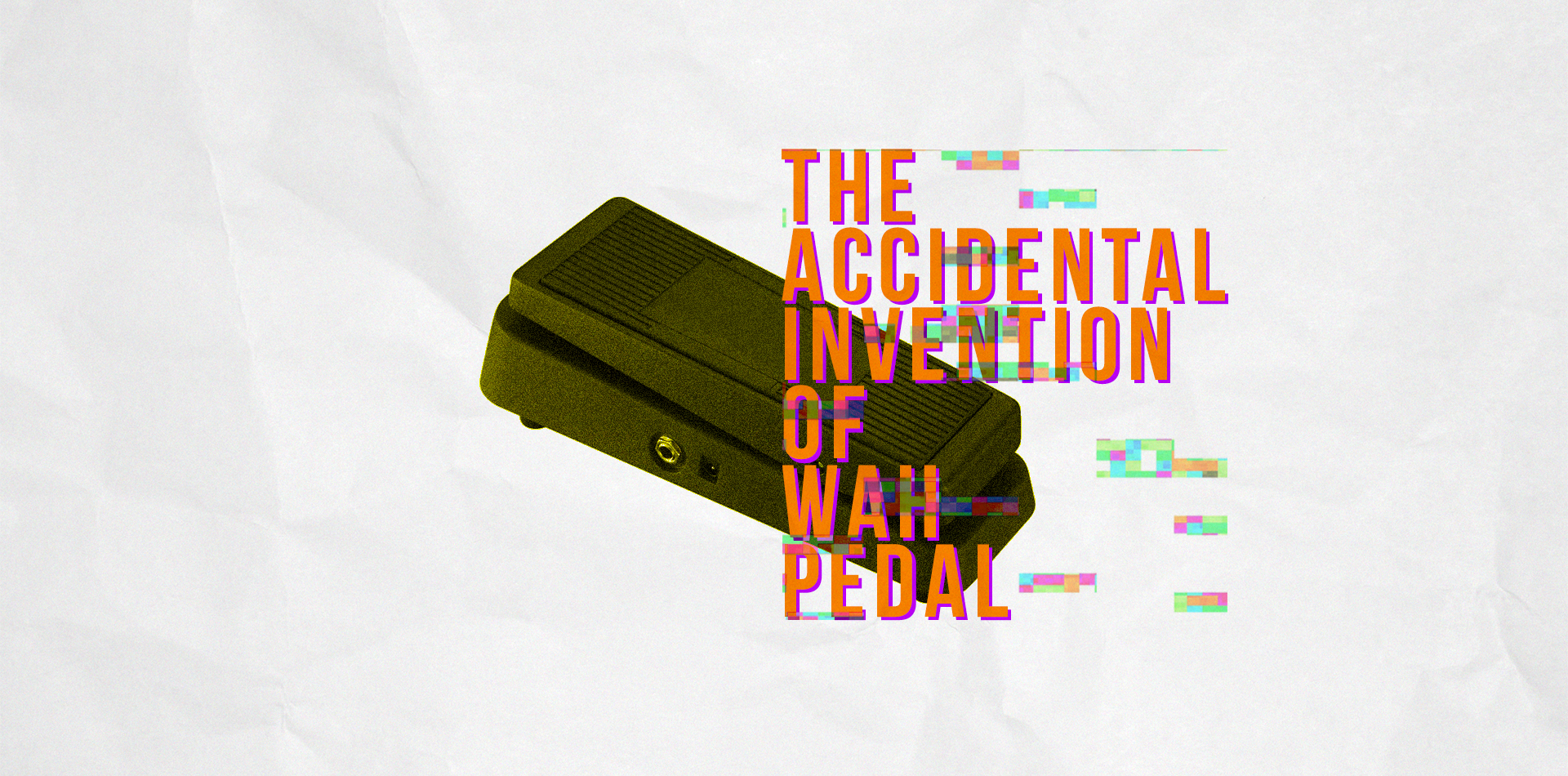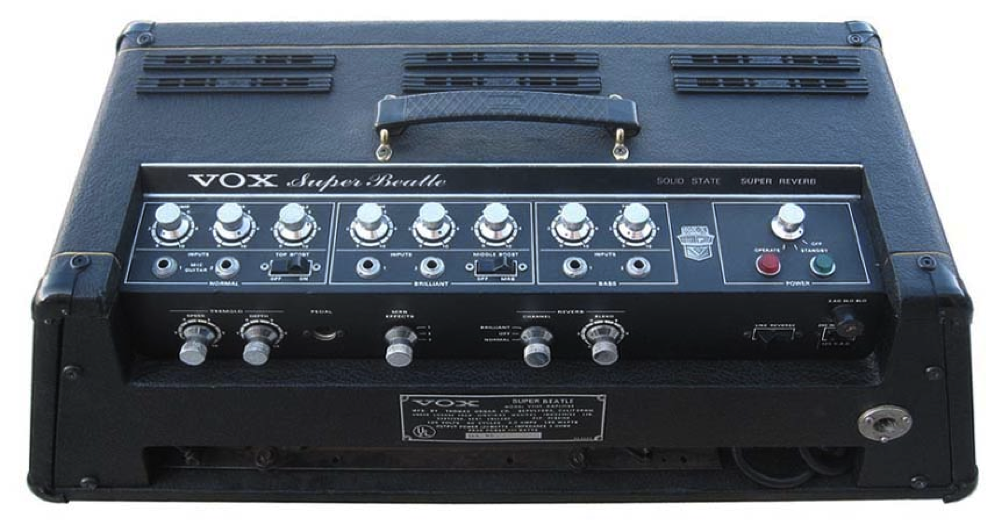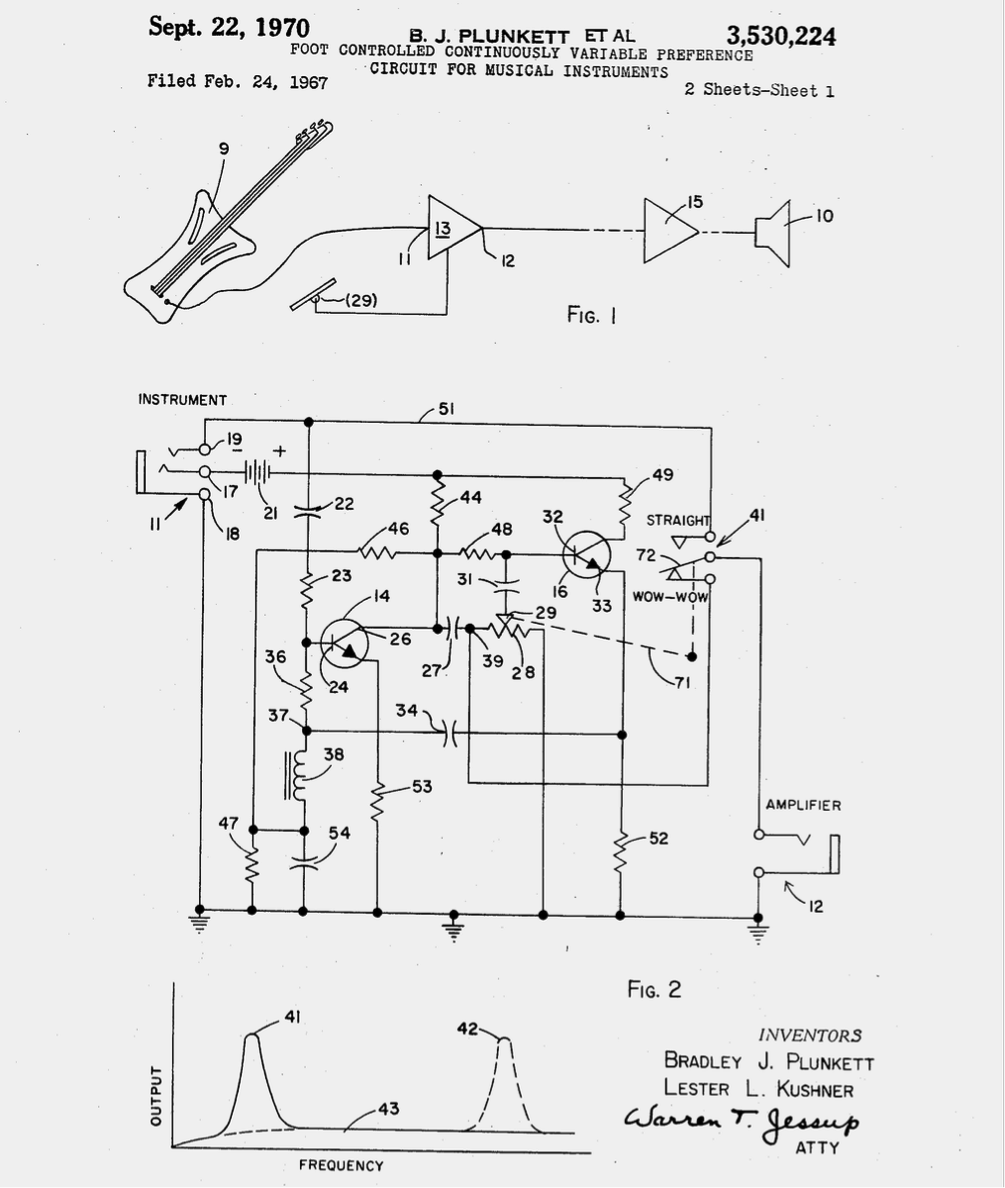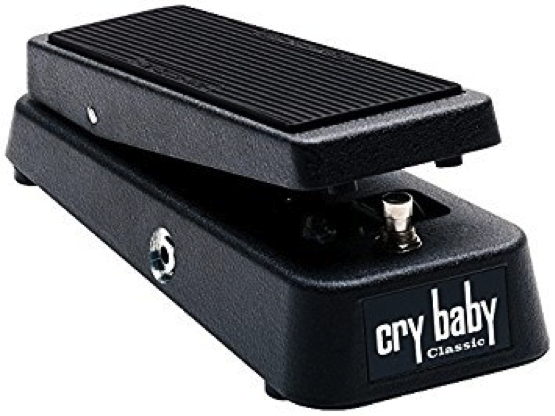
You know how it sounds. It’s unmistakable. Even if you hadn’t actually play it, you probably know how it looks and already have an image of how to play the device. Its sound mimics human voice on guitar. Definitely one of the prominent device that shapes music as we know it today. We know it as the crybaby pedal, wah-wah pedal, or simply as ‘the wah’. Little did we know that this historical effect was made by accident. How did the ‘accident’ happen? Then, how did it become an influential piece of gear for guitar players? To answer those questions we should start with a well-known brand – Vox Amplifiers.
On the Vox Super Beatle amp, there’s a switch called the MRB, short for Mid Resonance Boost. When switched to On, it filters the high and low frequency and boost the mid frequency. This produces a narrow sound that cut through the mix easily.
 VOX Super Beatle amplifier – Source: The Vox Showroom
VOX Super Beatle amplifier – Source: The Vox Showroom
In 1965, Vox amps was built for the American market exclusively by Thomas Organ Company. One of their engineers, Brad Plunkett, replaces the MRB switch to a potentiometer with the intention of simply making the amp cheaper to build. One day, he asked his workmate to plug a guitar to that unfinished circuit. Then his friend started playing the guitar while Plunkett turned the knob of the potentiometer. And there it was, the first ever “wah wah wah” sound on electric guitar. Later, a session player named Del Casher who worked as a consultant for Vox requested to put that invention on a pedal enclosure. He was known to play for Elvis Presley, James Brown, and Frank Zappa. Right after, Plunkett took a Vox volume pedal and removed everything inside. He put his newly invented circuit to that enclosure along with a 9 volt battery so it allowed the person playing guitar to adjust the frequency sweeps by rocking the pedal with his foot.
 The patent for the original Wah Pedal – source: Google Patents
The patent for the original Wah Pedal – source: Google Patents
After a lot of negotiations internally (because they actually preferred to market the device as an effect for trumpet player, mimicing the use of ‘mute’), Thomas Organ Company released the pedal as a guitar effect for the public in 1967 as two separate brands: ‘Vox Wah-Wah’ and ‘Cry Baby’. Although the pedal wasn’t widely accepted by the time, it immediately get into hands of big names such as Eric Clapton, Frank Zappa, and one great player in the history of guitar: Jimi Hendrix. Hendrix performed with the wah pedal in Woodstock ‘69 and everyone was amazed and went crazy on its wailing sound. Entering the 1970s, the wah pedal had become a rapid success. Many recordings of that era featured the heavy use of wah pedal on guitar, such as employed by David Gilmour (Pink Floyd), Jimmy Page (Led Zeppelin) and the Oscar winner of Best Original Song on 1971 Academy Award: ‘Theme from Shaft’ by Isaac Hayes.
On the early 1980s, Thomas Organ Company was terminated and stopped manufacturing the wah pedal. But one person decided to buy the rights to the phenomenal pedal. His name is Jim Dunlop from Dunlop Manufacturing. Dunlop rebuilt the enclosure and updates the circuit. From the re-release by Dunlop, the wah pedal continued its second charge on the rigs of hard rockers such as Eddie Van Halen, Kirk Hammet (Metallica), and Slash (Guns N Roses), up to the 1990s alternative acts like John Frusciante (Red Hot Chilli Peppers) and Tom Morello (Rage Against The Machine). Currently, Dunlop offers more than 20 variations of the Cry Baby pedal.
 Dunlop Cry Baby Classic pedal
Dunlop Cry Baby Classic pedal
To this day, the wah pedal keeps its widespread use among guitar players. It had a lot of alterations from many manufacturers in the form of Bass Wah, Auto-wah, and other things but the original sound is still sought after. The wailing sound of solo guitars and the ‘wacka wacka’ rhythm will surely still be discovered in a lot of future recordings.
Sources:
- Whiteside, Jonny. 2017. 50 Years Ago, the Wah-Wah Pedal Was Born in a Hollywood Hills Garage. Laweekly.com. http://www.laweekly.com/music/50-years-ago-the-wah-wah-pedal-was-born-in-a-hollywood-hills-garage-7767475
- Crockett, Zachary. 2015. The Invention of the Wah-wah Pedal. Priceonomics.com https://priceonomics.com/the-invention-of-the-wah-wah-pedal/
- Wallace, Amy. 2011. With a Flip of a Knob, He Heard the Future. Nytimes.com http://www.nytimes.com/2011/08/07/business/del-casher-and-the-story-of-the-wah-wah-pedal.html

